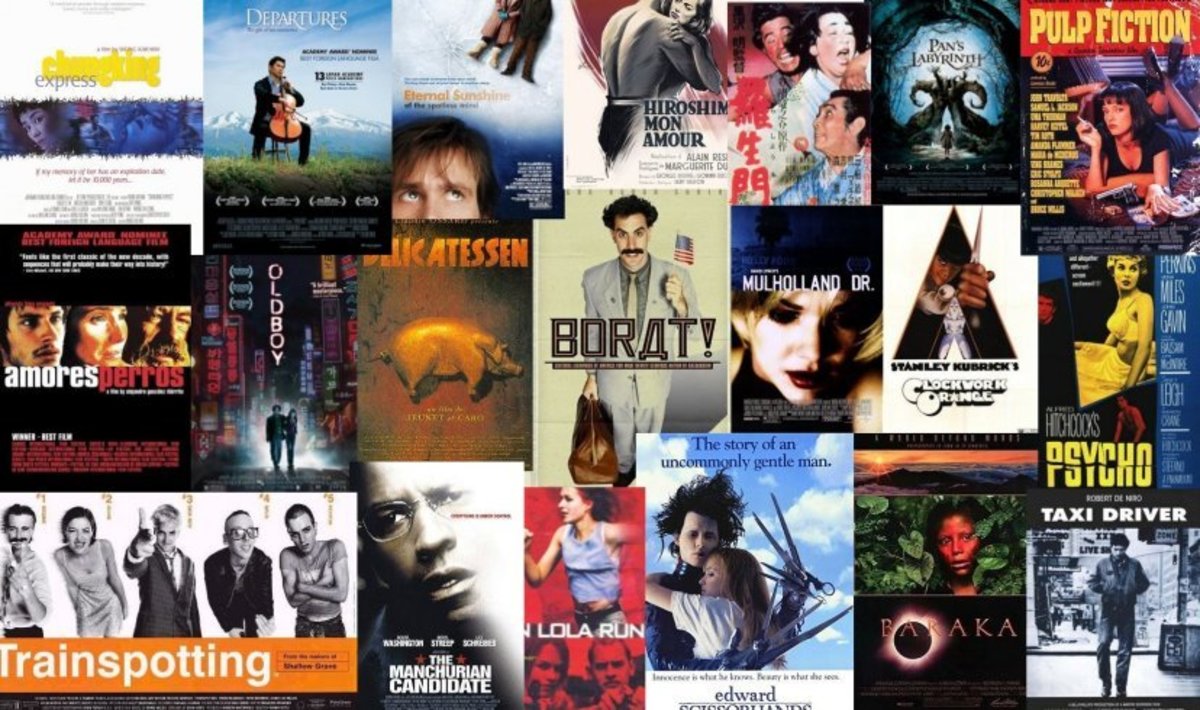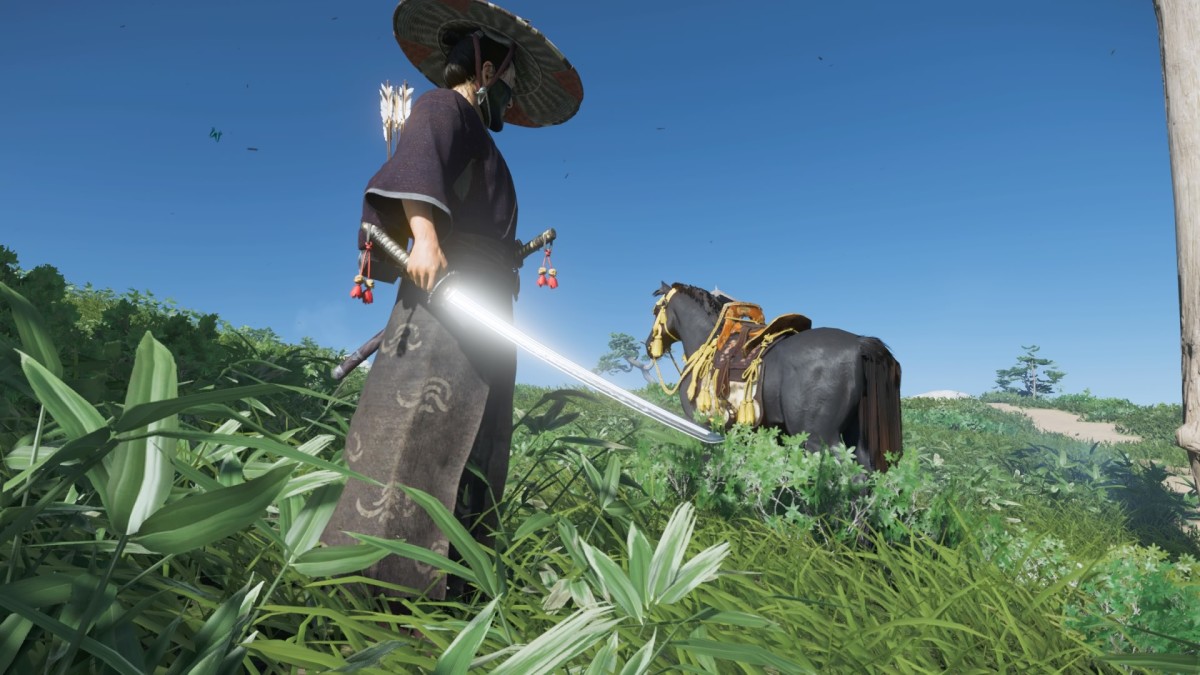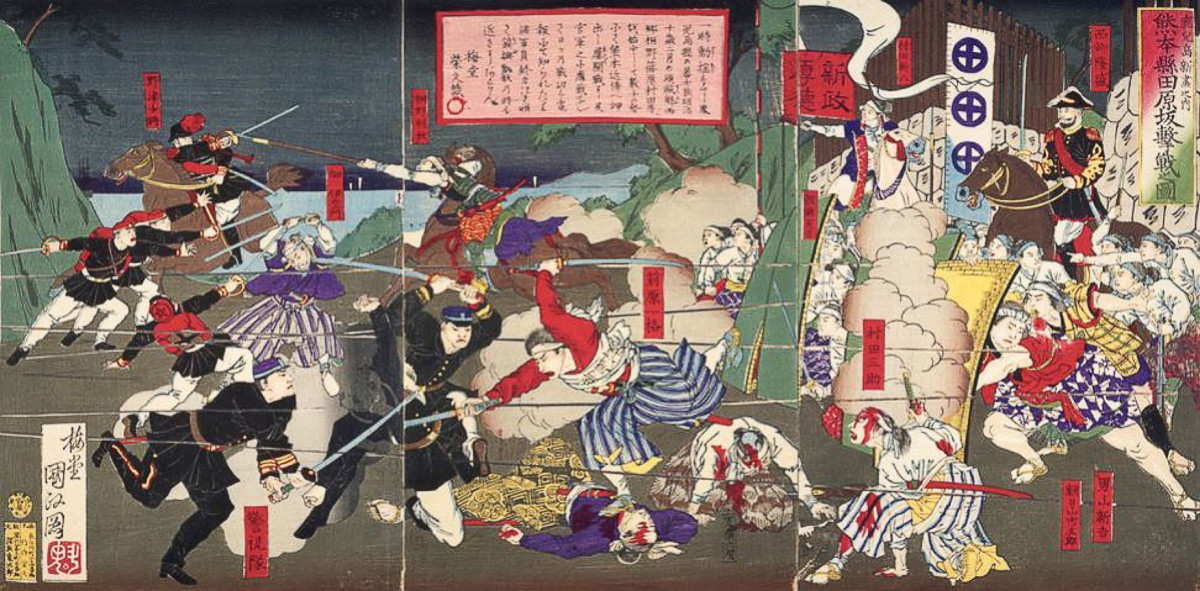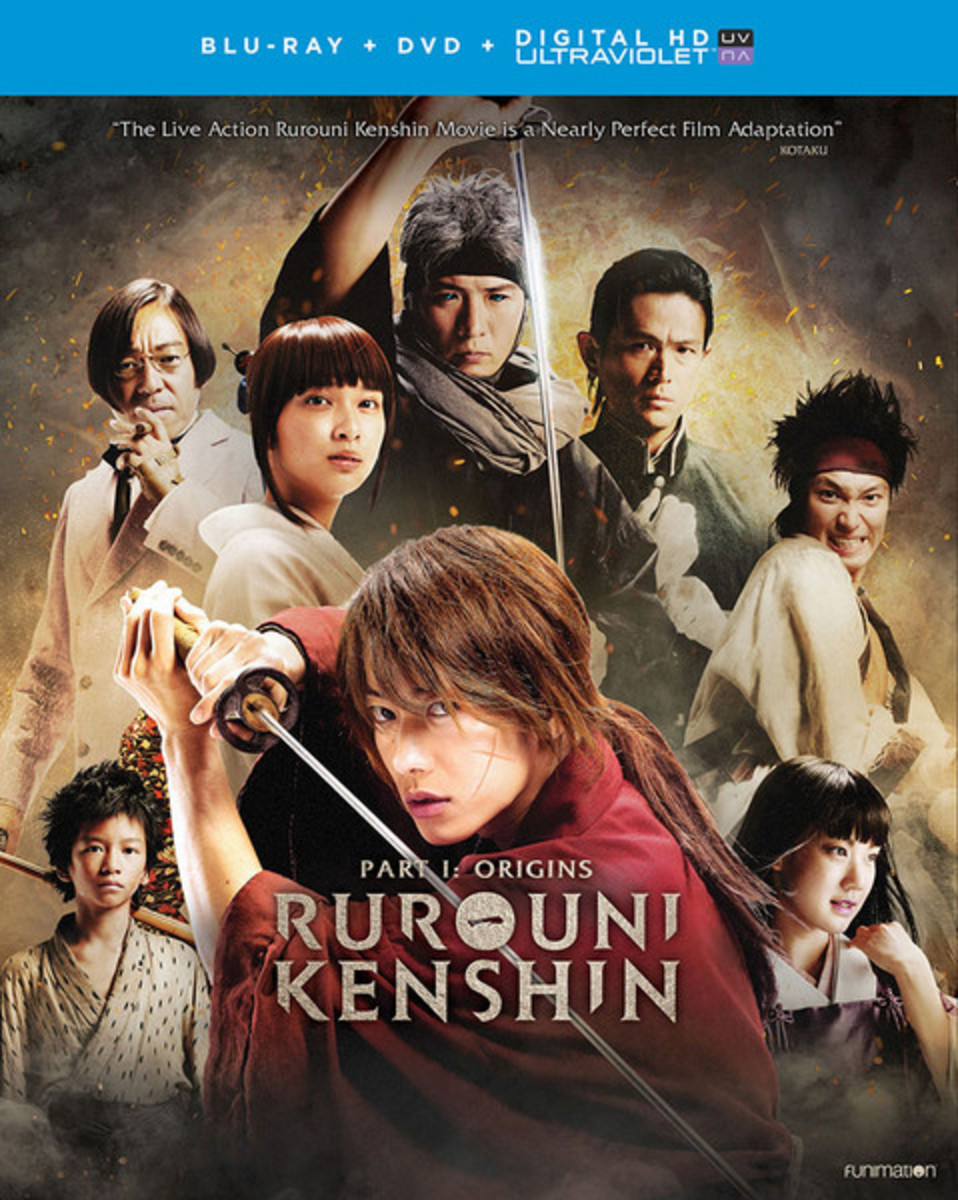Looking Into and Beyond the Excessive Violence: An In Depth Review of Takashi Miike's Izo

There is something to be noted about a film whose intent is to confront violence in such a straightforward way that it forces the audience to look beyond its atrocities to find a deeper meaning within. Generally, in non horror based films, violence is a manifested conceptualization of an idea.
A film like A Clockwork Orange (Kubrick, 1971) glorifies violence to question society’s response to uncontrolled youth. A film like Braveheart (Gibson, 1995), uses violence to bring the brutality of historical combat to life. In many ways, violence is an action to be considered and mulled over by the viewer. Whatever the opinion, it is always an action: what Alex did to the woman in red or how William Wallace was disemboweled. Takashi Miike takes the action of violence and gives it a name: Izo (2004).
Who is Izo?
There are so many ways to discuss a film like Izo. It is about man and woman, master and servant, parent and child, nation and people, God and faith, love and hate, life and death, past and future. In many ways, Miike tackles too much in this film and it is easy to question what you’re watching and why you’re watching it. What is Miike trying to accomplish? That question can’t be answered without first exploring what the purpose of Izo is. He is violence. But, why is he violence?
Izo is a lower level samurai, who is told to be a killing machine by his lord, Hanpeita, a duty which he proudly accepts in life and continues beyond his execution. In short, he is violent because his master told him to be. So why does Miike spend well over an hour and half of his lengthy two hour film showing Izo killing, mutilating random people in various places and times?
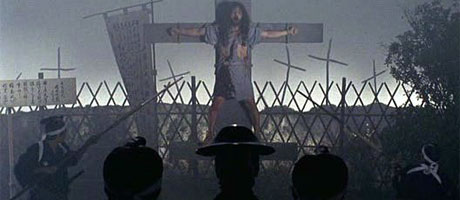
The Beginning
The film begins with an old medical clip of a man’s pelvic area ejaculating followed by the 1865 execution of Izo Okoda. Miike rarely does things without function and in this case he quickly links life and death. Death is only the beginning for Izo, who is manifested throughout time, surrealistically jumping from era to era and back again. I wonder, to what purpose?
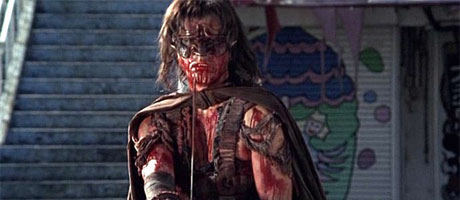
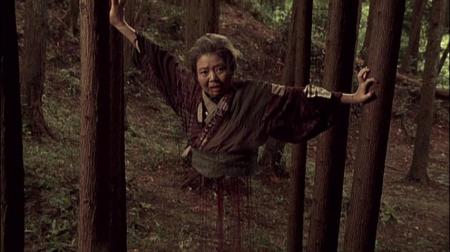
The first to die by his hands are: a succession of individual samurai, an army of samurai and then a rōnin. He also kills his lover with a rock and slices his mother in half. However, to delve too deeply into that would take the argument along another tangent ripe with Oedipal and misogynistic theories too vast to discuss now.
It is within the next series of Izo’s killings that I question what Miike is doing in this film. Miike melds time and space having Izo single handedly obliterate a fully armed Special Assault Team in an 18th century-esque Japanese village. Next, there is an army of samurai running around a modern Tokyo block, only to be slaughtered as is the next group of samurai, now situated in a more appropriate historical setting. What seems odd is that after defeating a group armed with guns, Izo is back to fighting a group armed with swords. What’s stranger is that following a group armed with swords, he fights a gang armed with bats ala The Warriors (Hill, 1979). If the absurdity of it all had not hit the viewer at that point, Izo next confronts businessmen followed by full on families begging for their lives.

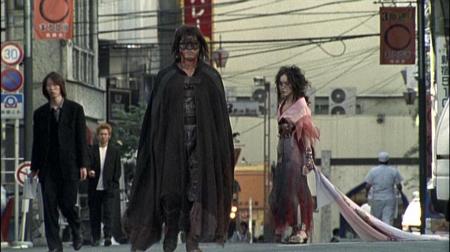
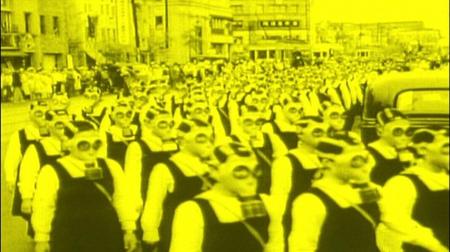

It Can Seem Rather Pointless, But...
It takes Miike quite a long time to get to the point, but it becomes clear that who Izo kills isn’t important. Assassins, armies, men, women, children; it doesn’t matter who dies by Izo’s hand or in what era they die. Time is not something to get accustomed to in this film. As with the opening sequence, the beginning of life and eventual death are only moments apart for Miike. People and time are inconsequential. Besides violence, the only other thing that is a consistent in the film is the location, Japan. Its importance is more than simply being a place or scene for Izo’s actions.
The found footage of Japan’s alliance with Hitler during World War II within the film demonstrates a notion of violence within the national identity outside of Izo. Every killing that Izo has committed is not outside of the realm of the national identity of Japan. This brings to mind the dialogue within the film, by the young student when prompted by his teacher to define a nation:
A malignant delusion that only exists in the mind. It is a deceptive fictional concept used to control those who naturally form herds and is nothing but a basic principle to support the fabrication of those pretending to be in power.
Those pretending to be in power are the six men who are hunting Izo throughout the film. They represent the formal structure of Japan’s national identity as it has evolved throughout history. They hunt Izo because his violence disturbs the system and the status quo. They represent religion, war, education, finance, organization and logic.
Miike spends the most time (though not much relatively speaking) with the Archbishop. There is a questioning of religious figures as ‘swindlers’, but still a lack of a decisive opinion. After the religious figures are peed on and killed, Izo finds a deep empty hole where the conduit of the gods sat. There is an idea of an empty pit of nothing that almost makes a statement, but is it about a lack of faith or something else?
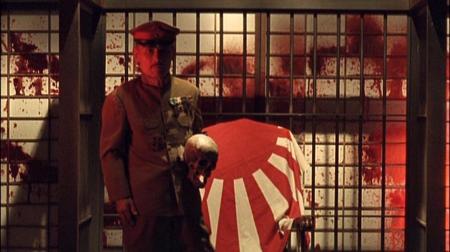
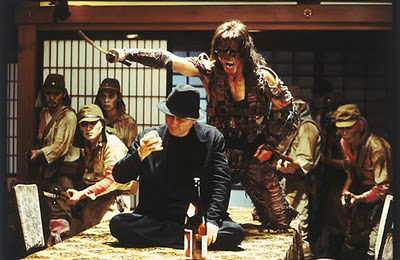
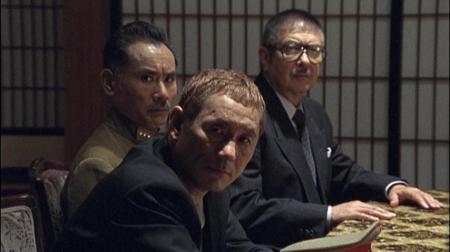
It's All Too Confusing, But At Least There are Zombies!
Miike doesn’t put much time into the specifics of each of these men. They are but symbols and require no background and little consideration.
I’m still not sure what was meant by the general charging with a skull, going through Izo’s body like the killer was a ghost then dying right after. It could have been symbolism of the man in charge of the lives of many without actually fighting himself. That’s probably why he was surrounded by an army of zombie soldiers. It’s not entirely clear, but who cares since it let Miike film an army of zombie soldiers.
I’m not sure how, but suddenly, Izo controls the zombies and charges into the room where the four remaining symbols of Japan await him. If the time spent on killing the first two where quick, the three representing finance, education and organization are killed after a few moments of begging and pleading. The last to go is logic (played by actor/director and all around badass Takashi ‘Beat’ Kitano) who dies without any fanfare. Each of these men and what they represent really don’t mean anything to Miike. They were merely symbols to have Izo violently eliminate.

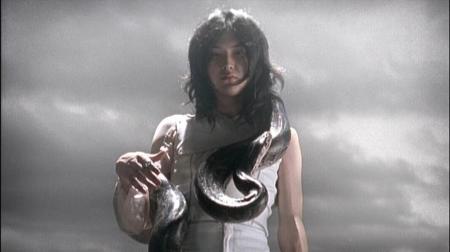
And There Was A Point...Really
In the end, this leaves four beings: a modernly androgynous man, a traditionally dressed man and woman and Izo. Izo hunts the three remaining with as much fervor as he had everyone else in the film. There are different results, however.
The most important of the last three is the master or god-like emperor, played with elegance by Ryûhei Matsuda. This androgynous character often carries a snake. Traditionally, the snake symbolizes wisdom and knowledge. Where the two that seem to appear randomly near him epitomize the perfect idolization of a traditional perception, he is not. Wearing white, his clothes are imperfect, though fashionable and very modern.
As Izo gets closer to the god-like emperor, he is confronted by the two in traditional grab. Though Izo kills the man and woman, both are immediately reborn into nature. Izo finally gets to his destination, confronts the god-like emperor and he gets blown away into an endless pit of darkness. It is a larger version of the hole under the throne the Archbishop sat on. And when I say blown away, I don’t mean a massive explosion to out due the excessive violence Izo imparted. I mean blown away as in a faint exhalation of air that couldn’t take the florets off of the head of a dandelion. And just like that, two hours of non-stop violence ends.
A Review of Takashi Miike's Audition
- Violence, Sex and Body Parts: An In Depth Review of Audition
This in depth review of the film Audition is filled with spoilers, but if you're interested in a different prespective of a film you love give it a try.
Still Worth the Watch
This character, the symbol of wisdom and knowledge, that eliminates Izo has been called god, a master, a god-like emperor among others. He is untouchable and the one thing impossible for Izo to kill. The endless pit he creates is similar to and links him to the endless hole the Archbishop sat on and blocked. Religion is structure and barely worth Miike’s time to kill, but what of faith?
This god-like emperor is this idea that is beyond structure, beyond tradition, beyond definition and beyond one person. This character is Japan. He is protected by the traditions of man and woman, over-seer of national representatives and holding in its arms all the wisdom and knowledge it needs. It is the one thing Izo’s all encompassing rage and violence can’t destroy. All of the found footage Miike uses (Nazi speeches, sexuality, death) wasn’t just to show violence for violence’s sake, it was to show what Japan was to what it is. Miike spends so much time inundating the viewer with violence because the past is so filled with it. In the end, it is not the character of Izo that is reborn, it is violence itself and no matter what form this new violence takes, Japan is more than the sum of its parts.
The humble remain castrated by the rules and customs we have devised. -Takashi Beat Kitano's character in Izo
In Izo, Takashi Miike uses violence to shed Japan of its own rules and customs. To free it from self imposed regulations and traditions. To avoid the mass production of armies of zombie soldiers and herds of begging businessmen. In his world violence isn’t just a means to tell a story, it’s the solution. This meaning would have had impact if only Miike had focused on it and it alone. Instead, this film is overwrought with symbolism and preachy dialogue. The film is worth watching for the visuals, the discussion and the direction. Though Izo does have something to say, it often becomes a jumbled mess whose only point of calm and certainty is the violence. Maybe that says something more about the mind of Takashi Miike than it does about the film itself.


